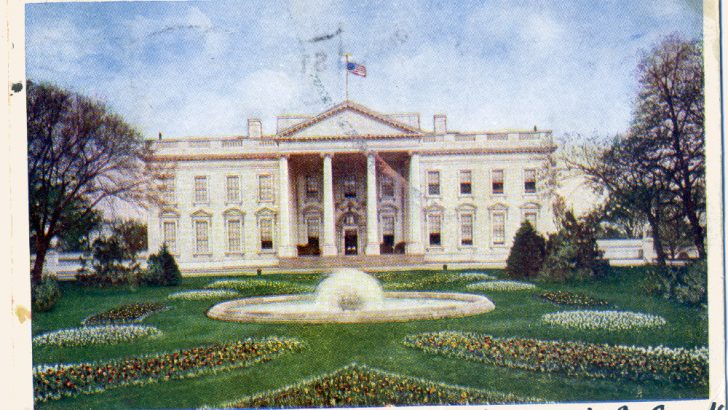My American Journey, by Douglas Hyde
edited by L. Mac Mathúna, B. Ó Conchubhair, N. Comer, C. Ó Seireadáin & M. Nic An Bhaird (UCD Press, €50.00)
Felix M. Larkin
Douglas Hyde (1860-1949), long an almost forgotten figure in Irish history, is at last beginning to receive the scholarly attention that he undoubtedly deserves.
In 2016, the historian Brian Murphy published his seminal study of Hyde and the Irish presidency, Forgotten Patriot (Collins Press, €19.99).
Now UCD Press has produced this sumptuous edition of Hyde’s My American Journey, originally published in Irish in 1937 as Mo thurus go hAmerice: nó, imeasg na nGaedheal ins an oileán úr, under his famous penname An Craoibhín Oibhinn.
The present volume comprises the full Irish text and an English translation of it, and there is a fine introduction by Liam Mac Mathúna, professor emeritus of Irish at UCD.
President Michael D. Higgins contributes an eloquent and erudite foreward, and the text is supplemented with copious illustrations, many of them reproductions of postcards that Hyde or his wife sent home from America which are now held in the Aidan Heavey Collection in the public library in Athlone. (Brief aside: this is a library well worth a visit for all interested in Irish history.)
Hyde visited America, accompanied by his wife, between November 1905 and June 1906. The trip was arranged and orchestrated by John Quinn, a notable Irish-American lawyer and patron of the arts. Hyde’s objective was, in his own words, “not only to promote Irish and Irish-language affairs, but also to fundraise”.
Among the places Hyde visited was Butte, Montana, which – perhaps surprisingly – boasts a very significant Irish population…”
He travelled extensively throughout the east and west coasts of the US and in the mid-west, covering some 19,000 miles (mainly by rail) and visiting over 60 cities.
He raised $64,000, or about £12,000 at the exchange rate then prevailing, for the benefit of the Gaelic League. Hyde had been president of the Gaelic League since its foundation in 1893, though he was later to break with it in 1915 when it abandoned its long-standing policy of staying above politics.
Hyde’s account of his American journey is full of wonderful images of Irish-America at a time when Irish-American cultural identity was much stronger than it is today. Indeed, one of the effects of Hyde’s visit to America was, Mac Mathúna argues, to make Irish-Americans less ashamed of themselves as an emigrant people who had arrived in the New World poor and unwelcome. He established their credentials as sons and daughters of an ancient civilisation.
Irish population
Among the places Hyde visited was Butte, Montana, which – perhaps surprisingly – boasts a very significant Irish population, attracted there by the prospect of work in copper mines.
Hyde wrote that Butte was “an almost Irish city. Most of the inhabitants are Irish. The mayor is Irish and the Irish control everything.” However, he also remarked that it was “the ugliest place he had ever seen. There is neither a tree, bush, plant nor even a blade of grass here or anywhere nearby”.
He turned down an invitation to go down into the mines.
Hyde and his wife had a lucky escape while in America. They spent much of February and March 1906 in California, mostly in San Francisco. This was a particularly successful part of Hyde’s journey – due largely to the efforts of an energetic local priest, Fr Peter Yorke – but just three weeks later, on 18 April, San Francisco suffered the great earthquake that ravaged the city.
Earthquake
Hyde records that the news of the earthquake greatly disturbed him. He sent off a telegram to his former hosts saying: “Overwhelmed with sorrow at the great calamity”, and he arranged to return some $5,000 of the money he had raised in San Francisco to the city for relief of distress.
It is somewhat puzzling that Hyde waited over thirty years before publishing My American Journey in 1937. While Mac Mathúna does not address this matter in his introduction, the most likely explanation is that offered by Patrick Maume in his entry on Hyde in the Dictionary of Irish Biography.
Maume points out that speculation began early in 1937 that Hyde might be chosen by agreement as our first president under de Valera’s new constitution. Publishing My American Journey may have been designed to burnish his image as an elder statesman and so boost his chances of becoming president. If so, it was a discreet form of canvassing.


 Douglas Hyde’s
postcard of the
White House.
© Aidan Heavey Library, Athlone/ National University of Ireland
Douglas Hyde’s
postcard of the
White House.
© Aidan Heavey Library, Athlone/ National University of Ireland
